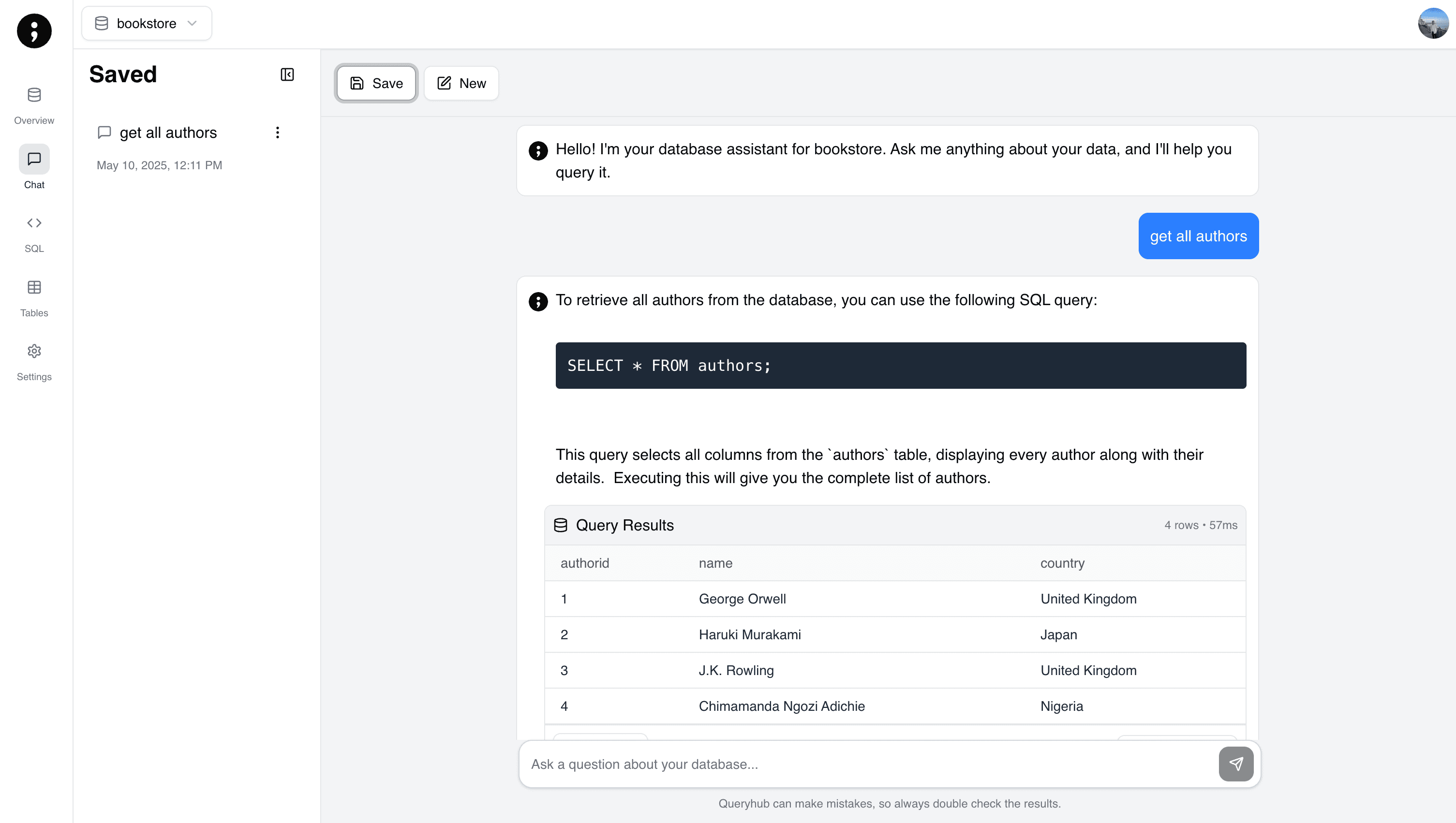In the world of database management, a significant transformation is underway. Large Language Models (LLMs) are bridging the gap between human communication and database queries, allowing users to interact with their data using natural language instead of complex SQL syntax. At QueryHub, we've been at the forefront of this revolution, and today we're diving deep into how this technology works and why it's changing the database landscape forever.
The Traditional Database Query Challenge
For decades, accessing information in databases has required specialized knowledge:
- Learning SQL syntax with its SELECT statements, JOINs, and WHERE clauses
- Understanding database schema structures and relationships
- Debugging complex queries when they don't return expected results
- Maintaining and optimizing queries as databases evolve
This technical barrier has created a divide between those who can access data (typically engineers and data analysts) and those who need insights from that data (business users, product managers, and executives). The result? Bottlenecks, delayed decisions, and untapped data potential.
Enter Natural Language Processing and LLMs
The emergence of sophisticated LLMs like GPT-4 has created a new paradigm for database interactions. These models can:
- Understand intent: Interpret what users are asking for in plain English
- Map to schema: Connect natural language concepts to database tables and columns
- Generate SQL: Produce syntactically correct and optimized SQL queries
- Explain results: Translate query results back into understandable insights
This capability effectively democratizes data access, allowing anyone to query databases without learning SQL.
How Natural Language to SQL Actually Works
The process of converting natural language to SQL involves several sophisticated steps:
1. Schema Understanding
Before any queries can be generated, the LLM needs to understand your database structure. At QueryHub, our system:
- Connects to your database
- Extracts the schema
- Creates a detailed map of your database structure
SELECT t.table_name, c.column_name, c.data_type, c.is_nullable, tc.constraint_type FROM information_schema.tables t JOIN information_schema.columns c ON t.table_name = c.table_name LEFT JOIN information_schema.constraint_column_usage ccu ON c.column_name = ccu.column_name AND c.table_name = ccu.table_name LEFT JOIN information_schema.table_constraints tc ON tc.constraint_name = ccu.constraint_name WHERE t.table_schema = 'public'
This query maps out your entire database structure, including tables, columns, data types, and relationships. The LLM uses this information to understand what data is available and how it's connected.
2. Natural Language Understanding
When you ask a question like "Show me all customers who made a purchase last month," the LLM must:
- Identify entities (customers, purchases)
- Recognize time constraints (last month)
- Understand the implied relationships (customers who made purchases)
3. SQL Generation
The LLM then translates this understanding into a valid SQL query:
SELECT c.name, c.email, COUNT(o.id) as order_count, SUM(o.total_amount) as total_spent FROM customers c JOIN orders o ON c.id = o.customer_id WHERE o.created_at >= DATE_TRUNC('month', CURRENT_DATE - INTERVAL '1 month') AND o.created_at < DATE_TRUNC('month', CURRENT_DATE) GROUP BY c.id, c.name, c.email ORDER BY total_spent DESC;
4. Result Interpretation
Finally, the system executes the query and presents the results in a human-readable format, often with additional context or visualizations.
The Technical Challenges We've Overcome
Building a reliable natural language to SQL system involves solving several complex problems:
Schema Ambiguity
Real-world databases often have ambiguous column names or complex relationships. For example, a database might have multiple date fields like created_at, updated_at, and purchase_date. When a user asks for "recent orders," which date should be used?
Our solution involves:
- Context-aware schema mapping
- Confidence scoring for ambiguous matches
- Interactive clarification when needed
Query Complexity
Some natural language requests imply complex SQL operations:
User question: "What's the average time between a customer's first and second purchase?"
This seemingly simple question requires subqueries, window functions, and careful handling of NULL values. Our LLM has been fine-tuned to handle these complex transformations.
Security Concerns
Allowing natural language input creates potential security risks, particularly SQL injection. We've implemented:
- Query sanitization and validation
- Permission-based access controls
- Execution limits and monitoring
Real-World Applications
The impact of natural language SQL generation extends across industries:
Business Intelligence
Marketing teams can ask questions like "Which campaign had the highest ROI last quarter?" without waiting for data team support.
Customer Support
Support agents can quickly query "Show me all interactions with customer X in the past week" while on a call.
Software Development
Developers can prototype database queries through natural language before optimizing them for production.
The Future of Database Interaction
As LLMs continue to evolve, we anticipate several exciting developments:
- Multimodal queries: Combining natural language with visual interfaces for complex data exploration
- Conversational context: Systems that remember previous queries and build on them
- Proactive insights: AI that suggests relevant questions based on data patterns
- Cross-database queries: Natural language that works across different database types simultaneously
Getting Started with Natural Language Queries
If you're interested in exploring this technology, here are some steps to get started:
- Understand your schema: Even with AI, having a clear understanding of your data structure improves results
- Start with simple queries: Begin with straightforward questions before moving to complex analyses
- Provide feedback: These systems improve with user feedback on query accuracy
- Consider security: Implement proper access controls before deploying widely
At QueryHub, we've made this process seamless by handling the complex parts for you. Our system connects to your PostgreSQL database, automatically maps your schema, and provides an intuitive interface for natural language queries.
Conclusion
The ability to query databases using natural language represents one of the most significant advancements in data accessibility in decades. By removing the technical barriers to data access, organizations can unlock insights faster, make better decisions, and truly democratize their data.
Ready to transform how your team interacts with your database? Try QueryHub for free today and experience the power of natural language database queries for yourself.


